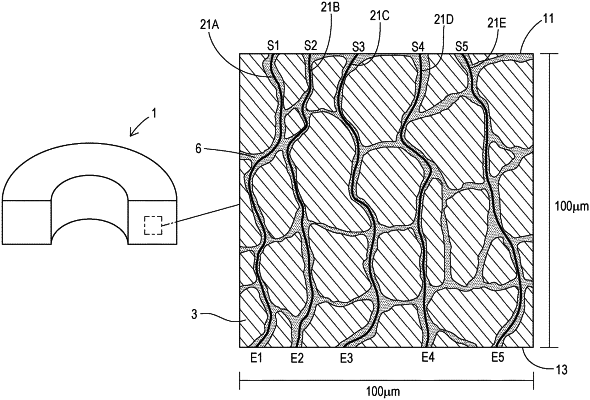| CPC C22C 38/02 (2013.01) [B22F 1/00 (2013.01); B22F 1/05 (2022.01); B22F 1/052 (2022.01); B22F 1/105 (2022.01); B22F 1/16 (2022.01); H01F 1/20 (2013.01); B22F 2301/35 (2013.01); B22F 2302/253 (2013.01); B22F 2304/10 (2013.01)] | 5 Claims |

|
1. A dust core comprising soft magnetic metal particles and a particle boundary phase, the soft magnetic metal particles having an average particle size of 5 μm or more and 30 μm or less,
wherein the particle boundary phase includes a polycrystalline compound containing Al (aluminum),
when a sectional structure of the dust core is observed, an area percentage of α-Al2O3 in the particle boundary phase is 75% or less,
when the sectional structure of the dust core is observed in a first field of view of a 150 μm×150 μm square, and when, in a region where the particle boundary phase is located in an H-letter shape, two intersecting points where two vertical lines and one horizontal line that constitute the H letter intersect are connected with a straight line, and a perpendicular bisector of the straight line is drawn, a crossing width at a position where the perpendicular bisector crosses the particle boundary phase is defined as a thickness Tn of the particle boundary phase, and
when the thickness of the particle boundary phase is measured at five positions to respectively determine Tn (where n is an integer of 1 to 5), and an average thickness Ta which is an average of Tn (where n is an integer of 1 to 5) is calculated,
the average thickness Ta is 10 nm or more and 300 nm or less.
|